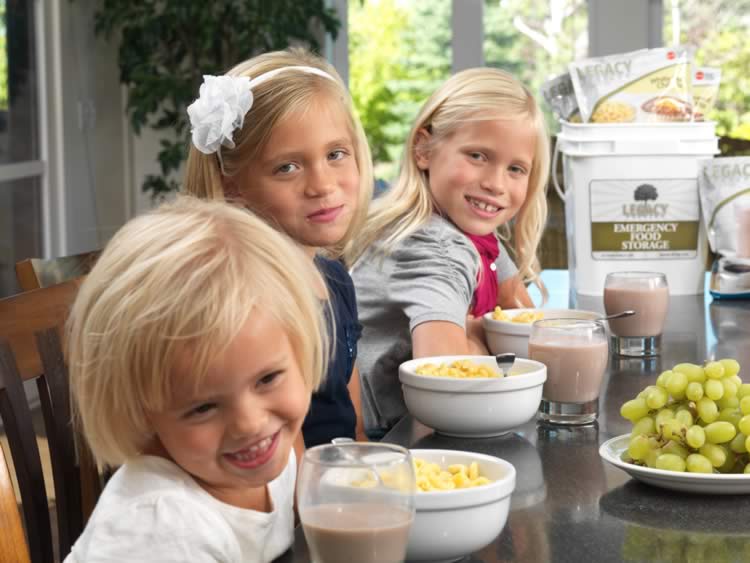Survival Food Storage : Taste Matters.
Store the food you regularly like to eat.

This principle cannot be overstated. Store food that your family enjoys together often. In times of disaster, when so many other adjustments in daily life are required, having food routines that carry over from life before will make hard situations easier to adjust to.
When you were a kid, do you remember ever going over to a friend’s house to eat dinner? Even if it was a close friend, everything about the dinner seemed alien to you–the way they folded their napkins, the saltiness of their gravy, the smells of the food cooking that were so different from the smells in your own kitchen at home at dinnertime. Little differences like this mattered and affected your comfort level in the home. Eating food from different cultures can sometimes put us in this situation too.
Routine, especially where food is concerned, can be powerful in an emergency situation. Food affects the way we feel, and if it is unfamiliar, it can be hard to stomach and make an unfamiliar, scary situation that much worse.
Many food storage suppliers offer entree options that are familiar favorites in most families, like macaroni and cheese, enchiladas, chili, and the like. Look around at what options are available to you and make selections based on what you know your family already eats on a regular basis.
Store food that tastes good.
At first glance, taste might not seem a very important consideration as you are collecting emergency food. It’s easy to justify buying Survival Food Storage that is not palatable and saying to ourselves, “It will be an emergency. Whether I like the food I’m eating or not will be the least of my worries.” However, making sure your food storage is appealing to you and your family is more important than it initially seems.
There is something to be said for having food that tastes good and makes you feel comfortable, especially in an emergency situation.
Again, if you have kids, buying good-tasting food is even more important. Kids are picky eaters. If you are desperate to get your child to eat his dinner on a regular night at the dinner table, think of the multiplied desperation you are going to feel in an emergency situation trying to get your child to eat.
It’s not just about preferences, either. In emergency situations, kids in particular have a hard time forcing themselves to eat something, especially if the food does not taste good. On the other hand, if the food is something your child loves, it can be a real help when times are bad. Food that is familiar and tastes good to us has the power to make us feel comfortable and relaxed and cared for, even in stressful situations.
Don’t Forget the Treats.
A commonly-overlooked aspect of food storage is the idea of storing a few luxury items, things that you are used to having and would not like to do without. These items might be things like coffee or chocolate or other specialty foods that are part of your routine. Having luxury items may not seem to matter much, but don’t underestimate the power of a simple treat in a survival situation.
It might simply be good for morale, but it could also be a valuable bartering item should things come to that. Mostly, having little treats stored can make life in an emergency more liveable.
Survival Food Storage can be a big purchase. Take the time to figure out what food you and your family will eat comfortably. An emergency is not the time to try new foods, and it’s also not the time to force your family to eat food they do not like. Food should be a comfort in bad situations, not a negative factor adding to the stress.

